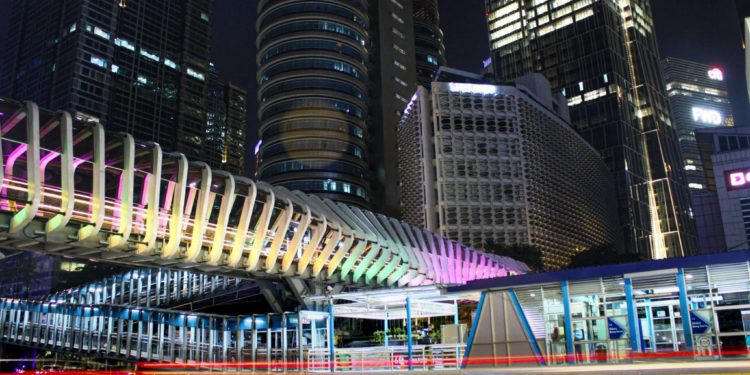Medical tourism is quickly becoming a promising driver of growth in Indonesia. Each year, nearly 2 million Indonesians seek medical care overseas – almost 20% of the population. Recognizing the scale of this trend, the government sees a real chance to turn things around and strengthen the local economy.
According to the Ministry of Health, developing the country’s medical tourism industry could contribute more than Rp 1.36 trillion to the GDP. The plan centers on improving healthcare infrastructure, setting up Special Economic Zones (SEZs), and gaining the confidence of both international investors and Indonesian patients.
Why Indonesia Is Doubling Down on Medical Tourism
For years, many Indonesians have turned to Malaysia, Singapore, and Thailand when they needed more advanced or specialized medical treatment.
But that trend is changing. With a concerted push from the government, Indonesia is aiming to reposition itself, not only to retain outbound patients but also to attract inbound ones from neighboring nations.
Key regions like Bali and Labuan Bajo are at the heart of this transformation. Both areas have been singled out as key locations under the government’s Special Economic Zone (SEZ) plan. They provide simplified regulations, tax breaks for investors, and vital backing to develop top-tier healthcare and wellness facilities.
Medical SEZs: The Backbone of the New Ecosystem
One of the most well-known examples is the Special Economic Zone in Sanur, Bali. Backed by international hospital operators and in partnership with global investors, the Bali SEZ is expected to deliver high-end specialist treatments, rehabilitation centers, and wellness retreats – all integrated into a tropical tourist experience.
In Labuan Bajo, best known for its marine biodiversity and proximity to Komodo National Park, the vision is slightly different.
The government wants to turn the area into a mix of eco-tourism and wellness, where people can come for preventive care and alternative therapies in a calm, natural setting.
It’s not just about economics – these zones are also meant to change how healthcare works in Indonesia, making it more competitive while staying true to the country’s culture.
Infrastructure Is Key – And It’s Rapidly Evolving
You know, being a good medical tourism spot isn’t just about having good hospitals. Everything has to fit together – like health care, getting around, places to stay, and how easy it is to get into the country. Indonesia’s been working on fixing airports, roads, and adding hotels close to hospitals.
They’re also trying to make tech work better. Stuff like keeping patient info organized and booking appointments is getting easier. The goal is to make things go smoothly for patients, from the moment they first get in touch until they’re back home resting
Visa Accessibility: Making It Easy for Patients to Come
Another important part of making medical tourism work is how easy it is for patients from other countries to get a visa. If it’s tough to get in, people will just go somewhere else. That’s why services like Bali visa by Indonesiavisaonline are so helpful.
Whether you’re someone from Australia looking for affordable cosmetic surgery in Bali or a visitor from the Middle East wanting to try wellness programs in Labuan Bajo, this site makes the visa process much simpler. It gives step-by-step help, real-time updates, and fast-track options tailored especially for medical travelers, so dealing with paperwork isn’t a headache.
Why This Matters for Investors and Policymakers
The economic argument is strong. Medical tourism isn’t just about hospitals – it supports hotels, transport, wellness centers, and the broader service economy.
According to The Jakarta Post, the Sanur Health SEZ alone is expected to bring in tens of thousands of foreign patients annually, generating high-value jobs and boosting healthcare standards across the board.
For investors, this is a sector with long-term resilience. Global trends show that patients are increasingly looking for destinations that combine cost-effective care with unique experiences. Indonesia has both natural beauty and a growing medical infrastructure, making it a compelling bet.
Patient Stories: A Growing Vote of Confidence
Testimonials from early adopters – especially from regions like Timor-Leste, Papua New Guinea, and even Australia – reflect growing satisfaction with Indonesian medical services. Patients cite affordability, shorter wait times, and the opportunity to recover in serene locations as major benefits.
A 42-year-old patient from Perth, who traveled to Bali for orthopedic treatment, shared:
“It wasn’t just the surgery – it was the whole experience. From hotel pickup to hospital care and even my post-op wellness retreat in Ubud, everything was seamless. And it cost me a third of what I’d pay at home.”
Challenges to Watch
Of course, challenges remain. Indonesia still needs to work on upskilling medical professionals, ensuring international accreditations, and building consistent service standards across SEZs. Language support, insurance partnerships, and global hospital alliances will also determine how competitive the nation becomes in this space.
But with a clear government vision, private-sector participation, and a strategic roadmap, the momentum is undeniable.
Final Thoughts
Indonesia’s shift from being a source of outbound medical travelers to becoming a global health destination is not a distant dream – it’s already underway. With SEZs like Bali and Labuan Bajo laying the foundation, the pieces of the puzzle are coming together.
For patients, it means better care in breathtaking locations. For investors, a fast-growing, future-ready market. And for Indonesia, it’s a chance to reclaim billions, raise national healthcare standards, and make the country a trusted name in global wellness.












































































